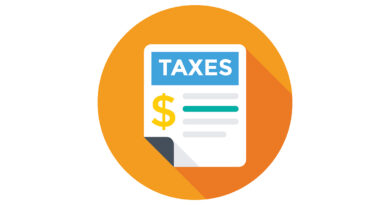Is Your Mortgage Technology Losing In The Game Of Catch-Up?
If you’ve ever played Tetris, then you know the premise of the game is to arrange a random sequence of falling geometric shapes to form a solid horizontal line without gaps. When such a line is formed, it disappears and any blocks above it fall down to fill the space. As the player levels up, the shapes move faster. The game ends when the player is unable to keep up with the faster pace—the stack of shapes reaches the top of the playing field and no new shapes are able to enter.
Today, the loan lifecycle seems like a losing game of Tetris. As much as lenders and technology service providers want to ensure a smooth loan experience, keeping up with the demands for compliance with new regulations or risking stiff penalties in the post-Dodd Frank era has resulted in lenders and providers simply doing whatever it takes to keep the production lines moving, or playing catch-up, while not necessarily filling all the gaps.
How We Got Here
Understandably, lenders and providers have not had much of a choice. After the 2008 crash, mortgage lenders needed to begin rebuilding trust with borrowers and society by ensuring compliance with new regulations like the Ability-to-Repay/Qualified Mortgage (ATR/QM) rule and the TILA-RESPA (TRID) rule, followed by TRID 2.0. Many lenders quickly selected and implemented compliance technology, which required updates each time a regulation was introduced or changed.
However, ensuring regulatory compliance wasn’t enough. Lenders also needed to rebrand themselves as consumer-friendly. This required technology that could improve the borrower experience on the front end, such as a customer relationship management (CRM) system to connect with current borrowers and build relationships with prospects. They also implemented point-of-sale (POS) systems to enable prospective borrowers to complete an application, verify their assets and employment, and pre-qualify for a mortgage—all online. Now, lenders are navigating the muddy waters of e-notary, e-closing and eNotes.
With all of the focus on the regulatory compliance and customer experience, little was done about the processes in the middle—the loan origination software (LOS). Trying to maintain an efficient workflow became even more challenging as all of the disparate technologies were attached to the LOS, and in many cases, created a less than ideal workflow, escalated errors and drove repetitive rechecks/rework throughout the loan process.
As a result, origination costs have skyrocketed over the past 10 years. According to the Mortgage Bankers Association’s latest Quarterly Mortgage Bankers Performance Report, the cost to originate a mortgage reached a high of $9,299 per loan in the first quarter of 2019, up nearly 300 percent from $2,345 per loan in 2009. Technology itself represents approximately four percent of that cost. However, this number fails to factor in the time and money spent on researching, implementing and regularly updating said technology.
Cloud-Based Imposters and How to Spot Them
If you think the technology behind your LOS is new just because it claims to be in “the cloud”, think again. Most of the LOS platforms on the market today are using the same foundation of server-based software with form-driven workflows that were developed more than 20 years ago, while simultaneously claiming to operate in “the cloud”. Don’t be fooled by these imposters.
For a LOS to truly be cloud-based, it should use a cloud computing service such as Microsoft Azure or Amazon Web Services for building, testing, deploying and managing the system. Regulatory changes and updates are made swiftly and easily—enhancement releases typically average an hour or less per release—with no software installations or computer downloads necessary. A truly cloud-based LOS is device independent for convenient access from any web-connected device and provides users with the advantage of consistent uptime. In fact, one of the most reliable cloud-based LOSs on the market even offers its users an uptime guarantee.
Now that you know what a legitimate cloud-based system is, ask yourself: Is my LOS provider truly cloud-based, or a cloud-based imposter? If you’re maintaining a server, dealing with software installations on your laptop, or if you cannot access the system on a tablet or mobile device, then the system is not truly cloud-based.
Data-Driven Configurability Is the Future, Customization Was the Way of the Past
Another benefit of newer LOSs is the ability to easily configure the platform to conform to each lender’s workflows, roles, organizational structure, compliance controls, business channel and unique needs. It should be noted that, although many people use the terms interchangeably, being configurable is completely different from being customizable. Your LOS should give you the freedom to focus on your business, not maintaining technology.
A configurable LOS is designed from the ground up to enable maximum flexibility so each lender can use the system to run their mortgage business the way that benefits them the most without expensive upfront customization costs and the headaches of ongoing system revisions and maintenance to keep it up-to-date. Should a need arise in the future to make changes to roles within your mortgage operations or your organizational structure, such as a new branch acquisition or a company merger, the system configuration can easily be modified to pull the new entities together.
The other advantage of a configurable system is that these modifications can be made without external software developers or retaining a large, internal IT department.
In a customizable system, code has been written to perform a task, if something changes, the code needs to be changed. That code change usually has unintended consequences downstream and something breaks. Think about the URLA implementation and what the administrators of customized systems are facing. There is an entirely new data set that needs to be implemented, if there is extensive custom code written into an LOS, there could be long development times required and unanticipated problems to be fixed.
When you take the data-driven, configurable LOS and combine it with the newer and more robust APIs that are evolving, you have a very powerful combination. These APIs have developed from simple, one-way data transfers to enabling more secure, more complex, two-way data transactions. If a lender, for example, needs to get pricing for a particular loan file, they can simply click a button to connect with their product and pricing engine (PPE). This pushes the loan parameters to their PPE and, based upon those loan parameters, the PPE pushes program and pricing options back into the LOS. The lender can select one of those programs and lock it in real time. With robust APIs, “a lender is no longer constrained by what a single vendor—most notably the LOS—has to offer because they can now use APIs to incorporate their best-in-breed capability into their platform,” according to STRATMOR Group’s Andrew Weiss.
The LOS of the Future
As you can see, the majority of LOSs in the market today have not been able to keep pace with software design and technology advancements due to regulatory requirements and mandatory updates and this problem will only become more prevalent in the future. The ultimate goal is to leverage automation to ensure accuracy, eliminate redundant activities and speed processes while minimizing or eliminating human errors within a loan file as it is being processed or manufactured within the LOS and then provided to the secondary market. Ideally, once the borrower data comes from the POS, it automatically flows into the PPE and an automated underwriting system (AUS), to the auditing technology, and then ultimately to the document generation technology for the closing package. Of course, processors, loan officers and underwriters will still have important roles to play, but, because the process would be more intuitive, they would touch the file less, which will help streamline processes, increase efficiencies and reduce costs, all while improving the borrower experience. The talk of a digital mortgage that can close in 10 days has been around a long time, however it is truly closer than you can imagine now.

Robert Shumake is National Sales Consultant for the Path LOS at Calyx, a leading provider of comprehensive mortgage software solutions for banks, credit unions, mortgage bankers, wholesale and correspondent lenders and brokers. He has nearly 20 years of experience in the banking, mortgage banking and financial technology industries. Shumake can be reached at [email protected].



